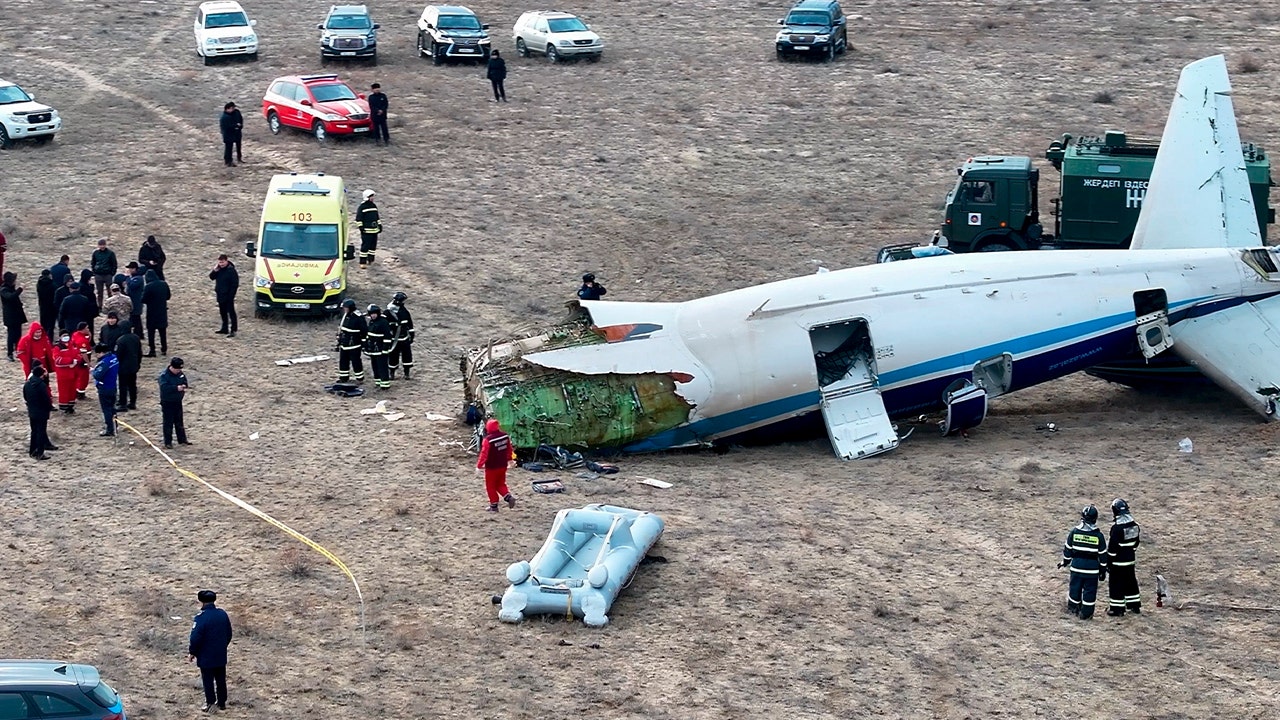The Pentagon on Monday identified the dead soldiers as Sgt. William Jerome Rivers, 46, of Carrollton, Ga.; Spec. Kennedy Ladon Sanders, 24, of Waycross, Ga.; and Spec. Breonna Alexsondria Moffett, 23, of Savannah, Ga. The three were assigned to the 718th Engineer Company, 926th Engineer Battalion, 926th Engineer Brigade, an Army Reserve unit based in Fort Moore, Ga.
The drone strike on the outpost in northeast Jordan near its borders with Syria and Iraq, called Tower 22, escalated hostilities in the region that have been mounting since the Oct. 7 Hamas attack on Israel and the subsequent war in Gaza.
A military investigation is underway to determine exactly what went wrong. Pentagon officials said the base’s air defenses were functioning properly early Sunday. Weather was not a factor.
One theory military officials are examining is that the militants studied the patterns of U.S. drone flights and deliberately positioned their attack drone near the returning American drone to make it harder to spot. Militia planners could have used Google Earth images of the base to guide the explosives-laden drone to the center of a mass target like the living quarters.
Mr. Biden has vowed to retaliate, and he met for a second straight day on Monday with his senior national security aides to discuss possible targets in Syria, Iraq and Iran. Senior U.S. officials said attacking Iran directly was less likely, though the U.S. military has drawn up plans to strike Iranian military advisers and trainers in Iraq and Syria in the event that U.S. troops were killed by Iran-backed militias in the Middle East.
Defense Secretary Lloyd J. Austin III, on his first day back to work at the Pentagon since his surgery last month for prostate cancer, condemned the attacks and vowed retribution.
“Let me start with my outrage and sorrow for the deaths of three brave U.S. troops in Jordan and for the other troops who were wounded,” Mr. Austin said before meeting with NATO’s secretary general, Jens Stoltenberg. “The president and I will not tolerate attacks on U.S. forces, and we will take all necessary actions to defend the U.S. and our troops.”
The drone strike in Jordan underscored that the Iran-backed militias — whether in Iran or Syria, or the Houthis in Yemen — remained capable of inflicting serious consequences on American troops despite the U.S. military’s efforts to weaken them and avoid tumbling into a wider conflict, possibly with Iran itself.
American troops in Iraq and Syria, and now Jordan, have come under attack at least 165 times since October — 66 times in Iraq, 98 times in Syria and Sunday’s attack in Jordan — the Pentagon said on Monday. More than 80 service members had suffered injuries, including brain trauma, before the latest salvo.
“We know that Iran supports these groups,” John F. Kirby, a National Security Council spokesman, said on Monday. “We know they resource them, we know they train them. We know that they’re certainly not discouraging these attacks.”
But Mr. Kirby added, “The degree to which they order and direct is something that intelligence analysts will look at.”
Pressed repeatedly at briefings with reporters on Monday about when and how the United States would respond, Mr. Kirby and Ms. Singh declined to comment on specific options. They emphasized that the administration was seeking to avert a wider war in the region, even as they blamed the attack for escalating tensions.
“We’re not looking for a war with Iran,” Mr. Kirby said. “But the attacks have to stop.”
Secretary of State Antony J. Blinken said on Monday that he would not “telegraph” any potential U.S. response but that such action “could be multileveled, come in stages — and be sustained over time.”
Mr. Blinken added: “This is an incredibly volatile time in the Middle East. I would argue that we have not seen a situation as dangerous as the one we’re facing now across the region since at least 1973, and arguably even before that.”
For its part, Iran on Monday denied any link to the attack and blamed Washington for igniting tensions in the region.
About 350 Army and Air Force personnel are deployed to the Tower 22 border outpost. It serves as a logistics and resupply hub for the Al Tanf garrison nearby in southeastern Syria, where American troops work with local Syrian partners to fight remnants of the Islamic State.
The one-way attack drone hit near the outpost’s living quarters, causing injuries that ranged from minor cuts to brain trauma, a U.S. military official said. Eight U.S. service members were flown to Iraq for medical care, and three of those were expected to be flown to Germany for even more advanced treatment, Ms. Singh said.
The soldiers and airmen were living in containerized housing units, Ms. Singh said, essentially aluminum boxes a little bigger than a commercial shipping container. They have linoleum floors and cots or beds inside, and can be easily transported on trucks.
“What was different about this attack is where it landed,” Ms. Singh said. “It was pretty early in the morning, so people were actually in their beds when the drone impacted.”
Michael Crowley contributed reporting.





